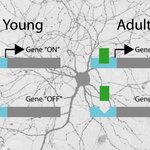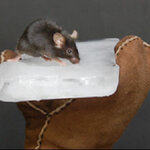Science category landing
Life Sciences

The synthesis of short protein chains (polypeptides) begins with the production of their components, the amino acids.
A group of Chinese researchers report a new method that is similar to olefin polymerization, which is used for the mass production of plastics such as polyethylene. The advantage of this reaction is that it uses inexpensive starting materials and would be ideal for industrial production.
Whether in the body or the factory, the backbone of polypeptide chains is usually formed by the linking of an amino group with the acid group of individual amino acids. Like pearls on a…

Evolution isn't always obvious and some new species haven't been identified because their outward appearance masks their genetic differences.
Research published in BMC Evolutionary Biology suggests that the phenomenon of different animal species not being visually distinct despite other significant genetic differences is widespread in the animal kingdom. DNA profiles and distinct mating groups are the only way to spot an evolutionary splinter group from their look-alike cousins, introducing uncertainty to biodiversity estimates globally.
Markus Pfenninger and Klaus Schwenk searched the…

A thumb’s up for “I’m good.” The rubbing of a pointed forefinger at another for “shame on you.” The infamous and ubiquitous middle finger salute for—well, you know. Such gestures that convey meaning without speech are used and recognized by nearly everyone in our society, but to someone from a foreign country, they may be incomprehensible.
The opposite is true as well. Plop an American in a foreign land and he or she may be clueless to the common gestures of that particular culture. This raises a provocative question—does culture influence the brain"
The answer is yes, reports Istvan Molnar…
There are hundreds of thousands of proteins for which amino acid sequence data are available, but whose structure and function remain unknown.
Now a research team, led by University of Illinois biochemistry professor John A. Gerlt, has devised a method to use a computational approach to accurately predict a protein’s function from its amino acid sequence. Their “in silico” (computer-aided) predictions were validated in the laboratory by means of enzyme assays and X-ray crystallography.
The new approach involved searching databases of known proteins for those with amino acid sequences that had…

Researchers across the world have been trying to answer the question of how RNAi works for many years. A research group headed by Prof. Renée Schroeder (MFPL) and Dr. Javier Martinez (IMBA) based at the Campus Vienna Biocenter says they have come closer to finding an answer.
RNA interference (RNAi) is a natural cellular defence and regulation mechanism which works by eliminating unwanted RNA molecules. Its potential for use in therapy was officially recognised last year with the presentation of the Nobel Prize in Physiology or Medicine. The first treatments to be based on this mechanism are…

Argonaute 2 (Ago2) is unique among its family: It is the only one of the four mammalian Argonaute proteins that exhibits endonuclease “slicer” activity (facilitation of miRNA-guided cleavage of target mRNA).
However, as Drs. Donal O’Carroll and Alexander Tarakhovsky (The Rockefeller Institute) report, Ago2’s defining characteristic is surprisingly non-essential for its role in hematopoiesis and miRNA biogenesis.
Drs. O’Carroll, Tarakhovsky and colleagues generated transgenic mice harboring mutated versions of Ago2 in their bone marrow. The researchers found that Ago2 is, indeed, quite…

Our brain consists of billions of nerve cells enabling to learn, remember and reason. Every time we think and experience, touch, smell or fear, millions of neurons in our brain becomes active.
These nerve cells communicate with each other by chemical and electrical impulses to compute incoming sensory information and integrate it via distinct brain regions. With 20,000 - 25,000 genes in our genome, most also expressed in neurons, there is now little doubt that neurons respond to challenging environments by adjusting the expression of genes for appropriate brain functions.
Stress, addiction…

Freeing knotted shoelaces with fingers that are frozen stiff is extremely difficult and can even be painful. The reason that sensitivity and dexterity are poor is that both nerves and muscles perform their tasks reluctantly when they are cold.
Nevertheless ice-cold fingers ache and do so all the more in response to the lightest of knocks or squeezing. As unpleasant as this is, it serves as protection against frost lesion. The question of how pain can still be registered despite the otherwise hampered function during cooling has recently been explained.
They have demonstrated that the…
By making careful observations of the growth of a layer of molecules as they gradually cover the surface of a small silicon rectangle, researchers from the National Institute of Standards and Technology (NIST) and North Carolina State University (NCSU) have gained basic insights into how self-propagating self-assembly wave fronts develop and have produced the first experimental verification of recently improved theoretical models of such systems.
In addition, the researchers say, the results reported in this week’s Proceedings of the National Academy of Science* should be important to…

A hundred years since Russian microbiologist Elie Metschnikow first discovered the invertebrate immune system, scientists are only just beginning to understand its complexity. Presenting their findings at a recent European Science Foundation (ESF) conference, scientists showed that invertebrates have evolved elaborate ways to fight disease.
By studying starfish, Metschnikow was the first to see cells digesting bacteria, a process he called phagocytosis (the eating of cells by other cells). Phagocytosis, it turns out, is an important immune defence in all living things. Since Metschnikow’s…